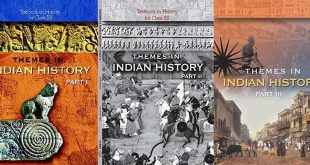Question: Explain the factors which influence the location of industries.
Answer:
- Large areas of land.
- Regular, assured supply of raw materials.
- Cheap land adequate power supply.
- Government policies.
- Nearness to market for quick sale of manufactured goods.
- An efficient network of transport at reasonable rates.
Question: Describe the growth and development of the cotton technology industry in the twenty first century.
Answer: Before the British rule, Indian handloom cloth was in great demand all over the world. The main varieties were the Muslin of Dhaka, chintz of Masulipatham and calico of Calcutta. Power, it could not maintain its position due to strong competition from the modern machine made cloth of great Britain.
The first modern cotton textile mill in India was established in Mumbai in 1854. Since then, this industry has made rapid progress. At present, it is the largest organized modern industry in India. Although cotton textile mills are located in more than 80 cities of India, most of them are is Maharashtra, Gujarat, west Bengal, Tamil Nadu and Uttar Pradesh. Mumbai is the largest center and is rightly called the cottonpolis of India.
Question: Describe the cotton textile industry with special reference to its history and spread in India.
Answer: Cotton is a natural fibre crop. The cotton textile industry is the industry which involves in making clothes out of the fibre. It is one of the oldest industries of the world. India has a glorious history of producing excellent quality cotton textiles. The Muslims of Dhaka, Chintzes of Masulipatnam, Calicos of Calicut and gold-wrought cotton of Burhanpur, Vadodara and Surat had world-famous quality and design. The traditional Indian cotton textile industry, however, could not compete with the Western textile mills, due to the high cost of the hand woven textile. The process involved, moreover, was time-consuming.
The first successful mechanized textile mill in India was established in Mumbai in 1854. The factors that led to the success were the warm and moist climate, the presence of a nearby port for importing machinery, the availability of raw material and skilled labour. Humidity was a main reason why the industry was initially limited to Maharashtra and Gujarat.
Today the industry has spread to various other parts of the country, due to the artificial production of humidity. The important cotton textile centers are in Coimbatore, Kanpur, Chennai, Ahmedabad, Mumbai, Kolkata, Ludhiana, Puducherry and Panipat.
Question: Write short notes on (a) iron and steel industry in Pittsburgh and (b) cotton textile industry in Osaka.
Answer:
- Pittsburgh is an important steel city in the USA. Most raw materials such as coal are available locally. Iron ore is brought from the iron mines in Minnesota. The shipping of ore is also a convenient pathway: the Great Lakes of North America. From the lakes to the industrial area, trains are there to carry the ore. Rivers like the Ohio, the Monogahela and the Allegheny provide adequate water supply.Finished steel is transported to the market by both land and water routes.
- Osaka is an important textile center in Japan. It is called the “Manchester of Japan”. Like every important centre, geographical factors played an important role in the establishment of industry here. The plains around Osaka meant land was easily available for growth of cotton mills. Warm and humid climate is well suited to the spinning and weaving of cotton. The river Yodo provides adequate water supply. Easily available labour and location of port are also significant factors. The industry however depends completely on imports. The finished product is exported and is not very expensive.
 Class Notes NCERT Solutions for CBSE Students
Class Notes NCERT Solutions for CBSE Students




